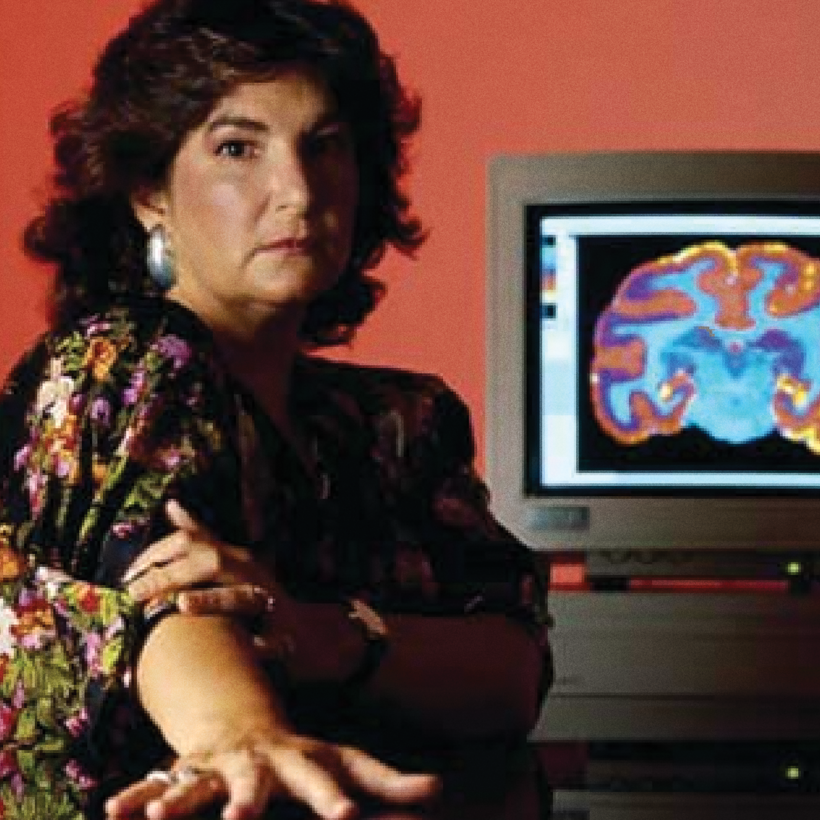When I began research for my biography of Candace Pert, I was shocked to learn that both the opioid crisis and the mind-body movement originated with this one woman’s work. Indeed, her visionary medical research shaped history—for good and, inadvertently, for evil.
Pert was a 24-year-old graduate student in neuropharmacology at Johns Hopkins University School of Medicine when, in June 1971, President Richard Nixon declared a war on drugs. Across the nation, a spike in crime was increasingly blamed on an addiction epidemic. Heroin use had spread to the white middle class, and the news was riddled with stories of teenagers dying from overdoses.
Moreover, an estimated 25 percent of the 270,000 American soldiers serving in Vietnam were hooked on a form of heroin that was far more potent than the version commonly available on American streets. With reports of wasted, dispirited, and increasingly monstrous soldiers overseas, the American public was growing weary of this foreign war just as Nixon sought to escalate bombing in North Vietnam.
Nixon knew that taking credit for a decline in addiction and drug-related crime would bolster his case for re-election. Vowing to sweep junkies from American streets, he allocated more than $6 million in federal funds for research on opiate addiction. The race was on.
On October 22, 1972, Pert achieved the kind of breakthrough most scientists only dream about. She located the opiate receptor, the mechanism by which opioids function in the brain, and believed she’d taken the first step toward ending drug addiction. She never could have imagined the nightmare she had set in motion.
Using her findings, pharmaceutical companies began working furiously to create non-addictive painkillers fashioned after endorphins (short for “endogenous morphine,” the body’s natural high), reasoning that humans couldn’t become dependent on the brain’s own neurotransmitter. However, when that proved impossible, and as it became clear that Big Pharma wouldn’t make a mint by eliminating addiction, companies moved to create more potent analgesics, churning out opioids, such as OxyContin and fentanyl that got people hooked.
The tragic irony of Pert’s discovery is that it helped spawn a virulent epidemic of drug dependence. Facing the largest public-health crisis of the 21st century, she was one of the few scientists courageous enough to protest drug companies. Like J. Robert Oppenheimer, a creator of the atomic bomb who came to hate nuclear weapons, she saw her findings being used for evil, with each new class of opioid lining corporate pockets while ravaging a population desperate for relief.
Like J. Robert Oppenheimer, a creator of the atomic bomb who came to hate nuclear weapons, Candace Pert saw her findings being used for evil.
However, a few years later, Pert also opened the door to a whole new field of research by studying the inner workings of the brain. In the early 1980s, Pert performed seminal studies proving the brain’s connection with the body. She found that, rather than being a control center, the brain works in concert with the endocrine, immune, and gastrointestinal systems to generate thoughts and emotions, which shapes our reality.
As a result, Pert began advocating for what is now called integrative or functional medicine, which emphasizes proactive steps to prolong and protect wellness before the body grows ill. Instead of prescription drugs, she promoted natural solutions, counseling that our minds could be used to heal our bodies, and vice versa.
Though Pert’s views were seen as radical and went largely unsupported during her tenure as chief of brain biochemistry at the National Institute of Mental Health, a subsidiary of the National Institutes of Health, her studies formed the basis for the now booming field of embodied cognition. Today, scientists across the globe continue to monitor the interconnections between thoughts and emotions, emphasizing how integral our feelings are to health.
In his best-selling book, The Body Keeps the Score: Brain, Mind, and Body in the Healing of Trauma, the psychiatrist Bessel van der Kolk affirms Pert’s claim that psychology and physiology are intertwined and explains how trauma produces physiological changes, such as recalibrating the brain’s alarm system. Given that 1 in 10 Americans now takes antidepressants and half a million children in the United States are prescribed anti-psychotics, Van der Kolk echoes Pert when he writes that “the drug revolution that started out with so much promise may in the end have done as much harm as good.” Instead, he espouses techniques Pert proposed decades ago, such as meditation, yoga, and biofeedback, to re-program our brains at the cellular level.
Pert died before her perspective was fully embraced by the scientific establishment, but she had pioneered a course of study that did not previously exist. “In neuroscience, biology, pharmacology, and psychology, people are taking mind-body connections very seriously,” says Lisa Feldman Barrett, who is among the top 1 percent of the most cited scientists in the world for her research in psychology and neuroscience. “That’s what a scientist’s true legacy is. It’s not just to publish papers; it’s to seed the field so that the next generation of scientists can carry forward ideas and do miraculous things.”

Pamela Ryckman’s Candace Pert: Genius, Greed, and Madness in the World of Science is out now from Hachette


